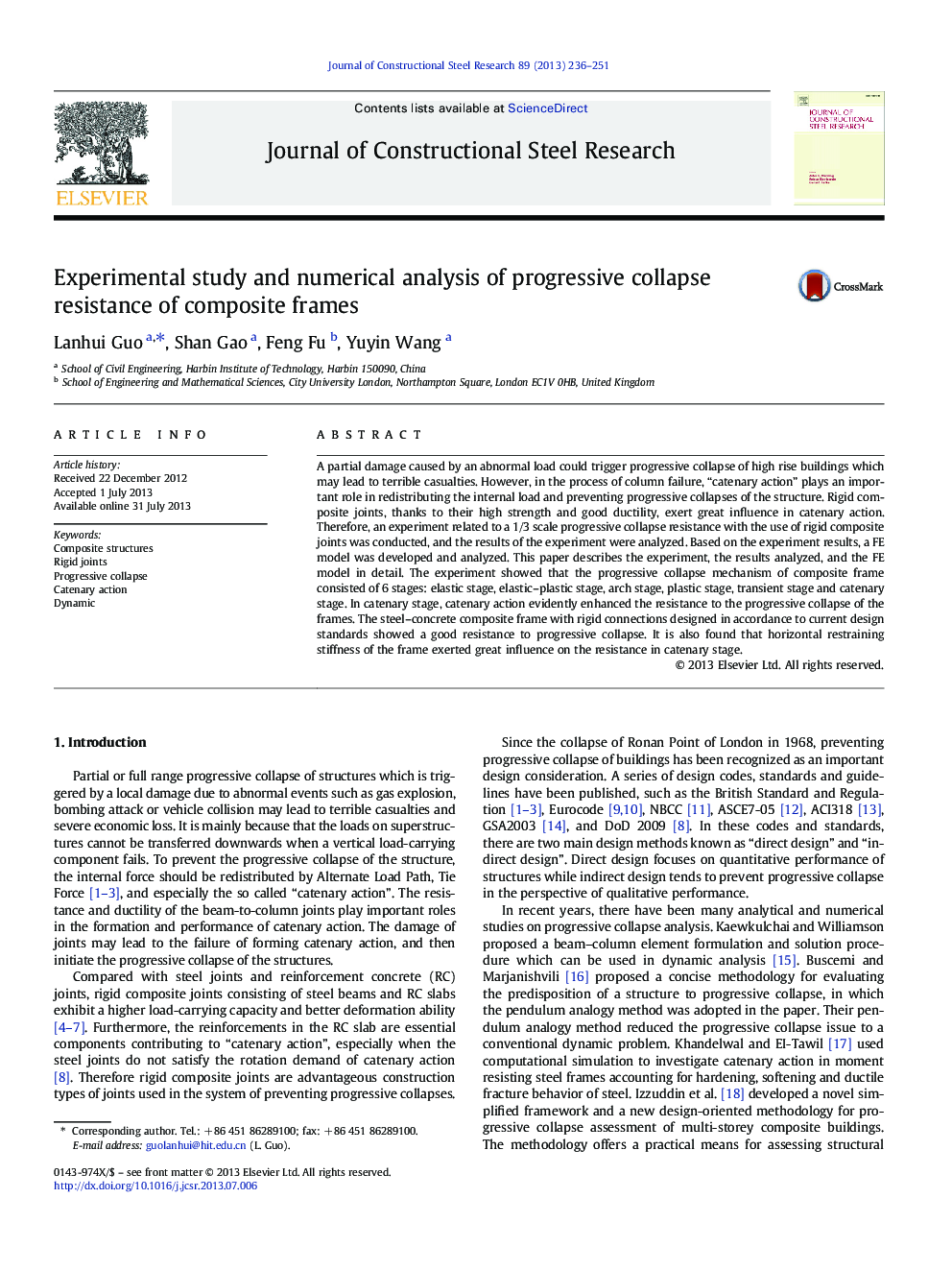| Article ID | Journal | Published Year | Pages | File Type |
|---|---|---|---|---|
| 284879 | Journal of Constructional Steel Research | 2013 | 16 Pages |
•A 1/3 scaled rigid composite frame under column loss was tested.•The progressive collapse process of composite frame consists of six stages.•Catenary action enhances the progressive collapse resistance of the frame.•Horizontal restraining stiffness affects the frame resistance in catenary stage.
A partial damage caused by an abnormal load could trigger progressive collapse of high rise buildings which may lead to terrible casualties. However, in the process of column failure, “catenary action” plays an important role in redistributing the internal load and preventing progressive collapses of the structure. Rigid composite joints, thanks to their high strength and good ductility, exert great influence in catenary action. Therefore, an experiment related to a 1/3 scale progressive collapse resistance with the use of rigid composite joints was conducted, and the results of the experiment were analyzed. Based on the experiment results, a FE model was developed and analyzed. This paper describes the experiment, the results analyzed, and the FE model in detail. The experiment showed that the progressive collapse mechanism of composite frame consisted of 6 stages: elastic stage, elastic–plastic stage, arch stage, plastic stage, transient stage and catenary stage. In catenary stage, catenary action evidently enhanced the resistance to the progressive collapse of the frames. The steel–concrete composite frame with rigid connections designed in accordance to current design standards showed a good resistance to progressive collapse. It is also found that horizontal restraining stiffness of the frame exerted great influence on the resistance in catenary stage.
